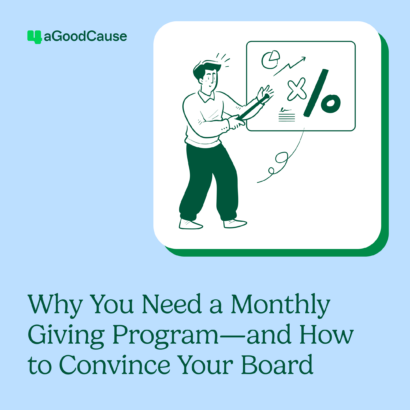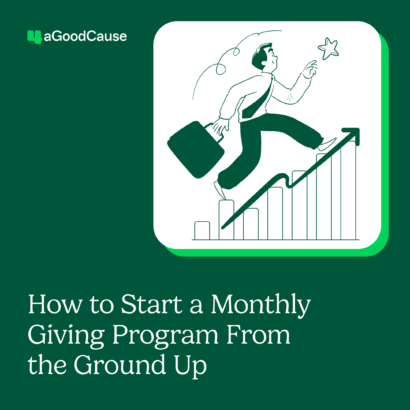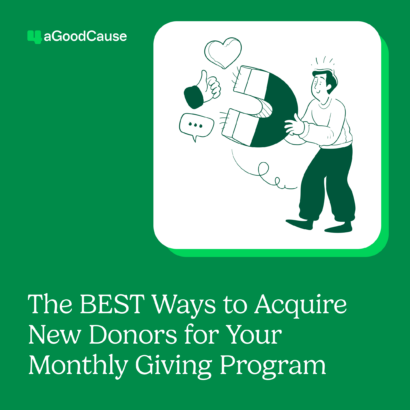Emotional drive is a key factor in successful donation programs and great storytelling is a highly impactful way to see success in this area. All nonprofits tell a story—on websites, through donation landing pages, using social media, sharing videos, or at events—not all of them tell these stories well enough to see significant increases in dollars raised.
Internal assessment of your stories and donor content can help take your fundraising program from stagnant to spectacular. Add a few of these storytelling tips and audit resources to your fundraising process to up your game for higher donor conversions.
Story types
First, it starts with your story type. Mix it up and create content that provides a variety of information for all donors. Some want to see the numbers while others want the feel-good stories. Typically, these stories will fall into one of three categories:
Stats and measurement: The bottom line about how dollars are spent, the number of people in need or statistics that drive home the point about your service area.
Impact stories: How you show up in the world and the faces of those who continue to benefit from your services.
Inside scoop: Key happenings within your organization. This can be program-specific, chapter-specific, or organization-wide.
Elements of a good story
Donors are looking for organizations that are mission-driven, can demonstrate positive impact and where they can see themselves as having a personal connection. Your stories should resonate with readers and viewers in a way that is personal and trustworthy. Do this by auditing your story content to ensure you have:
A main character or topic
Guide the reader with a person or thing to connect with from the get-go.
An obstacle
Whether it’s a specific need or problem the character has or a general need overall, identify what this need is at the beginning of your story. Set the stage.
An action or result
What was done? How did the character overcome? How did donors help rectify the situation?
A showcase of impact
Wrap up the story with specifics of impact. At the end of the day, how did the result turn positive? And if it didn’t turn positive, what specific actions can still be taken to provide a positive impact; if there’s still more to be done, use that as part of the ending.
Your stories should mean something to the reader. You know the great things your nonprofit is doing and you have a front-row seat to all the action. To your readers, this is all new information. Take time to explain thoroughly and tap into their emotions by telling a story that they will remember long after they have seen it.
Successful storytelling: 4 ways to tell if your content is working
While there is no guaranteed assessment to what works 100% of the time, these four metrics measurements can give you insight into what resonates with your donors.
Amount of time spent on page
Using your website analytics program (either built-in through your CMS or using Google’s free Google Analytics platform) look into the amount of time users spend on key pages of your website. The more time they spend on a particular page, the more likely it is that they have invested interest in the information they found there. Pull reports of your top five pages (based on time spent) on your website to help gauge top-performing content types.
Bounce rate
You can find your bounce rate within your website analytics as well. The lower the bounce rate, the better the content. A bounce rate indicates the rate at which a visitor comes to your website and ‘bounces’ off after viewing a single page. When you have a lower bounce rate, it indicates that visitors are happy with your content because they continue to spend time on your site to read more. A higher bounce rate can indicate disinterest or that they didn’t find what they were hoping to find after visiting just one page.
Engagement percentage for social media posts
When donors see information and stories they enjoy, they’ll show their interest with a ‘like’, a ‘share’, or even by making a comment on the post itself. Watching your engagement rate to see which post types rank higher than others can provide you with insight for future content (story) ideas.
The conversion rate on donation landing pages
Ultimately, you want your stories to turn into donations. While the rate of donations on any giving landing page can be linked to many factors, if the donation page traffic comes in from a story source (or your landing pages contain stories of impact, etc.) you can make some correlations of story success to donations based on your landing page donation conversion rates.
Overall content audits – stories, staff pages, donation landing pages – are beneficial to schedule throughout the year. Smaller teams may be able to do a deep dive into content performance once every year or so, while larger nonprofit teams may be able to put content audits on a biannual schedule. Based on your resources and needs, set a cadence that works for you.
For additional storytelling resources, check out these posts on the 4aGoodCause blog: “Social media storytelling for nonprofits: Q&A with Julia Campbell,” “Using the ‘story of one’ to convert donors on your blog,” and “How to gather stories of impact”.



